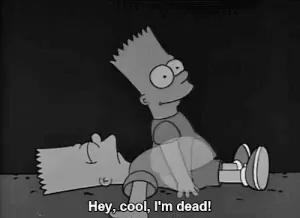Out of Body Experiences: Difference between revisions
mNo edit summary |
mNo edit summary |
||
| Line 1: | Line 1: | ||
[[File:Out of body experiences.png|alt=Out of body experiences|thumb|'''Figure 1'''. Consciousness is not permanently attached to the body.<ref>'''The experimental induction of out-of-body experiences. Science''', Ehrsson, H.H. 317: 1048, first published in 2007. Accessed on 15th September 2022 via: http://www.ehrssonlab.se/pdfs/Ehrsson-Science-2007-with-SOM.pdf</ref>]] | [[File:Out of body experiences.png|alt=Out of body experiences|thumb|'''Figure 1'''. Consciousness is not permanently attached to the body.<ref>'''The experimental induction of out-of-body experiences. Science''', Ehrsson, H.H. 317: 1048, first published in 2007. Accessed on 15th September 2022 via: http://www.ehrssonlab.se/pdfs/Ehrsson-Science-2007-with-SOM.pdf</ref>]] | ||
'''Out of Body Experiences (OBEs) are a state of mind which often occurs as a result of near death experiences or [[psychedelics]] use (most prominently ketamine and DMT).''' | '''Out of Body Experiences (OBEs) are a state of mind which often occurs as a result of near death experiences or [[psychedelics]] use (most prominently ketamine and DMT). OBEs are thought to occur due to disturbance of the functionality of the vestibular system (cochlear)'''<ref>'''Stimulating illusory own-body perceptions.''' Olaf Blanke, Stphanie Ortigue, Theodor Landis & Margitta Seeck. Nature volume 419, pages269–270 (2002)First Published: 19 September 2002 Neuropsychology</ref>'''.''' | ||
OBEs have been well-documented for centuries. One of the first recorded instances was a report from the French otologist Pierre Bonnier in 1905 which reported a patient "divided into two persons, one who had not changed posture and another new person on his right, looking somewhat outwardly. Then, the two somatic individuals approached each other, merged, and the vertigo disappeared." | OBEs have been well-documented for centuries. One of the first recorded instances was a report from the French otologist Pierre Bonnier in 1905 which reported a patient "divided into two persons, one who had not changed posture and another new person on his right, looking somewhat outwardly. Then, the two somatic individuals approached each other, merged, and the vertigo disappeared." | ||
Whilst OBEs seem to pull consciousness fully from the body, a lesser form, of this seems to be depersonalization / derealisation. A suggested evolutionary rationale for this mechanism is that OBEs tend to occur pre or during traumatic events, suggesting OBEs are used almost as an ''ejector seat'' of consciousness to avoid long term effects of psychological trauma. | Whilst OBEs seem to pull consciousness fully from the body, a lesser form, of this seems to be depersonalization / derealisation. A suggested evolutionary rationale for this mechanism is that OBEs tend to occur pre or during traumatic events, suggesting OBEs are used almost as an ''ejector seat'' of consciousness to avoid long term effects of psychological trauma. | ||
Revision as of 23:53, 14 September 2022

Out of Body Experiences (OBEs) are a state of mind which often occurs as a result of near death experiences or psychedelics use (most prominently ketamine and DMT). OBEs are thought to occur due to disturbance of the functionality of the vestibular system (cochlear)[2].
OBEs have been well-documented for centuries. One of the first recorded instances was a report from the French otologist Pierre Bonnier in 1905 which reported a patient "divided into two persons, one who had not changed posture and another new person on his right, looking somewhat outwardly. Then, the two somatic individuals approached each other, merged, and the vertigo disappeared."
Whilst OBEs seem to pull consciousness fully from the body, a lesser form, of this seems to be depersonalization / derealisation. A suggested evolutionary rationale for this mechanism is that OBEs tend to occur pre or during traumatic events, suggesting OBEs are used almost as an ejector seat of consciousness to avoid long term effects of psychological trauma.
- ↑ The experimental induction of out-of-body experiences. Science, Ehrsson, H.H. 317: 1048, first published in 2007. Accessed on 15th September 2022 via: http://www.ehrssonlab.se/pdfs/Ehrsson-Science-2007-with-SOM.pdf
- ↑ Stimulating illusory own-body perceptions. Olaf Blanke, Stphanie Ortigue, Theodor Landis & Margitta Seeck. Nature volume 419, pages269–270 (2002)First Published: 19 September 2002 Neuropsychology